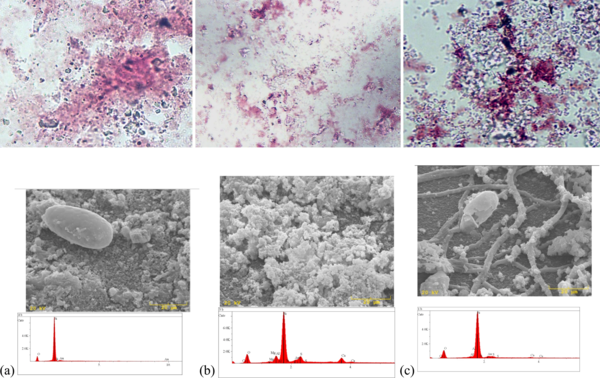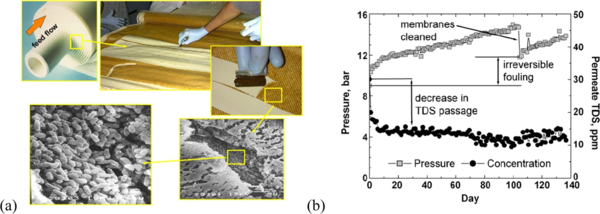케냐 시골지역 36가구서 57개의 물 샘플 채취 불소광도계와 비교해 불소 농도 측정 정확성 평가
연구 결과, 『네이처 파트너 저널 : 클린 워터(Nature Partner Journals : Clean Water)』 2월 8일자에 게재
![미국 일리노이주에 있는 노스웨스턴대학(Northwestern University)의 과학자들은 물에서 불소(F)의 독성 수준을 감지하기 위한 정확하고, 저렴하며 사용하기 쉬운 바이오센서를 개발했다. 사진은 아프리카 케냐 시골 지역의 한 가족이 노스웨스턴대학에서 개발한 불소 사용 바이오센서를 테스트하고 있다. [사진출처(Photo source) = 노스웨스턴대학(Northwestern University) / 사진 : 자넷 바솔라이(Janet Barsolai)]](https://cdn.waterjournal.co.kr/news/photo/202302/65521_36485_440.jpg)
미국 일리노이주에 있는 노스웨스턴대학(Northwestern University)의 과학자들은 물에서 불소(fluoride ; F)의 독성 수준을 감지하기 위한 정확하고, 저렴하며 사용하기 쉬운 시험의 구현을 위해 협력하고 있다.
노스웨스턴대학에서 개발된 새로운 바이오센서(biosensor) 장치는 아프리카 케냐 시골에서 현장 테스트를 거쳤으며, 불소에 대한 수질 테스트가 실험실 밖에서 쉽게 사용될 수 있고, 비전문가들에 의해 정확하게 해석될 수 있다는 증거를 제공했다.
전 세계적으로, 수천만 명의 사람들이 무색, 무취, 무미건조한 물질인 자연적으로 발생하는 불소의 독성 수준으로 상수도가 오염된 지역에 살고 있는 것으로 추정된다. 문제의 규모는 높은 비용 또는 사용 가능한 테스트 옵션의 복잡성 때문에 측정하기가 어려웠다.
안전한 식수에 대한 세계적인 건강 문제를 해결하기 위한 주요 단계인 새로운 검증된 시험 방법은 인류학과 합성 생물학 분야의 연구자들 간의 드문 협력의 결과이다.
이 연구는 노스웨스턴대학의 인류학자 세라 영(Sera Young)과 합성 생물학자 줄리어스 럭스(Julius Lucks)가 공동으로 이끌었다. 그는 와인버그 예술과학대학(Weinberg College of Arts and Sciences)의 인류학 및 글로벌 보건연구 부교수이자 정책연구소(Institute for Policy Research ; IPR)의 교수이다.
럭스(Lucks)는 맥코믹 공학대학(McCormick School of Engineering)의 화학 및 생물공학 교수이자 부교수이다. 럭스는 또한 노스웨스턴 합성생물학센터(Northwestern Center for Synthetic Biology)의 공동 책임자이며, 영(Young)은 또한 교수진이기도 하다.
[그림 1] 소금기가 있는 지하수 RO 플랜트에서 막에 대한 X선의 광학 및 주사 전자현미경 이미지 및 에너지 분산 분석

영과 럭스는 현장 데이터를 함께 수집한 것은 이번이 처음이며, 사회과학자와 합성생물학자가 머리를 맞대고 글로벌 과제를 해결할 때 무엇이 가능한지 보여준다고 말한다.
이 프로젝트는 결혼한 럭스와 영에 의해 수행된 사전 연구를 위한 독특한 교차점을 기반으로 하고 있다.
2017년, 영과 동료들은 인간의 경험을 고려한 세계적인 물 불안정 측정을 제공하기 위해 물 불안정 경험 척도를 개발했다. 영은 갤럽 월드 폴(Gallup World Poll)과 협력하여 2022년 랜싯 플래닛 헬스(Lancet Planetary Health)에서 WISE 척도를 사용하여 지구의 절반에 대한 추정치를 발표했다.
영의 연구에 자극을 받아, 럭스와 그의 연구실은 오염물질의 존재를 감지하기 위해 미생물에 의해 사용되는 분자인 자연적으로 발생하는 바이오 센서를 조사하기 시작했다.
2020년에는 바이오센서를 세포가 없는 합성생물학 시스템에서 용도 변경하는 연구를 발표해 현장에서 불소 등 유해 수질 오염물질을 검출할 수 있도록 했으며, 기술 플랫폼 이름을 ‘로잘린드(ROSALIND, 리간드 유도에 의해 활성화되는 RNA 출력 센서 ; RNA Output Sensors Activated by Ligand Induction)’로 명명했다.
세계적인 물 보안 향상에 대한 영의 연구를 더욱 발전시키기 위해, 럭스연구소(Lucks Lab’s)의 로잘린드(ROSALIND) 기술의 최신 반복은 장치의 속도와 사용성을 개선하여 유해한 수준의 불소가 안전에 우려되는 장소로 쉽게 운송할 수 있도록 했다.
연구팀은 케냐 시골지역 36가구에서 57개의 물 샘플을 채취해 금본위 방식인 불소광도계(fluoride photometer)와 비교해 불소 농도 측정의 정확성을 평가했다.
그들은 또한 이 기술이 세계적인 물 위기를 해결하는 데 의미 있는 영향을 미칠 수 있다는 핵심 지표인 시험 결과가 비전문가 사용자에 의해 쉽게 해석될 수 있는지를 조사하기 위해 그들의 연구를 설계했다.
결과는 우수하여 사용 시점이 세계보건기구 한도인 1백만분의 1 이상의 불소 수치를 정확하게 예측할 수 있는 84%의 확률을 보였다.
[그림 2] 시립 물재활용 RO 플랜트의 바이오 파울링(biofouling)을 나타내는 이미지 및 데이터

이 테스트는 또한 사용자와 과학팀 간에 해석 불일치가 있는 57개 테스트 중 1개만 사용할 수 있는 매우 유용한 것으로 밝혀졌다.
노스웨스턴대학의 인류학자 세라 영(Sera Young) 교수는 “이것은 수질을 측정하는 완전히 새로운 방법이다”라면서 “이 연구는 우리가 매우 복잡한 생물학에 기초하지만 매우 간단하게 작동하는 실험을 사람들의 손에 넣을 수 있다는 것을 보여준다”고 말했다.
맥코믹 공학대학(McCormick School of Engineering)의 럭스(Lucks) 교수는 “이는 또한 납과 PFAS(과불화합물)와 같은 다른 화학물질에 대한 그러한 테스트의 실현 가능성을 보여준다”고 말했다.
불소 사용 지점 시험을 위한 잠재적인 다음 단계에는 지질학적 불소가 전 세계적으로 위치한 위치 매핑이 포함될 수 있다.
시카고에 있는 영과 럭스 교수는 집에서 물 속의 납을 빠르게 감지하기 위한 가정용 테스트의 유용성을 조사하고, 합성 생물학 혁신의 영향을 증가시키기 위해 사회과학과 합성 생물학을 연결하기 위한 모델로 이 연구를 활용하는 데 관심이 있다.
‘불화물 바이오센서 사용 지점의 정확성과 유용성 : 케냐 나쿠루 카운티의 현장 연구(The accuracy and usability of point-of-use fluoride biosensors : a field study in Nakuru County, Kenya)’라는 연구 결과는 『네이처 파트너 저널 : 클린 워터(Nature Partner Journals: Clean Water)』 2023년 2월 8일에 게재되었다.
[원문보기]
Biosensors change the way water contamination is detected
Social scientist and synthetic biologist collaborate to tackle a global challenge
Scientists from Northwestern University have collaborated on the implementation of an accurate, low-cost and easy-to-use test for detecting toxic levels of fluoride in water.
The new biosensor device developed at Northwestern has been field tested in rural Kenya, providing evidence that water testing for fluoride can be easily used outside of a lab and accurately interpreted by nonexperts.
Worldwide, it is estimated that tens of millions of people live in areas where the water supply is contaminated with toxic levels of naturally occurring fluoride, a colorless, odorless and tasteless substance. The scale of the issue has been difficult to measure because of the high cost or complexity of available testing options.
A major step toward addressing global health concerns over access to safe drinking water, the new proven testing method is the result of a rare collaboration between researchers in the fields of anthropology and synthetic biology.
The study was co-led by Northwestern anthropologist Sera Young and synthetic biologist Julius Lucks. Young is an associate professor of anthropology and global health studies at Weinberg College of Arts and Sciences and a faculty fellow at the Institute for Policy Research (IPR). Lucks is professor and associate chair of chemical and biological engineering at McCormick School of Engineering. Lucks is also co-director of the Northwestern Center for Synthetic Biology, where Young is also a faculty member.
Young and Lucks say it is the first time they have collected field data together, and it shows what’s possible when social scientists and synthetic biologists put their heads together to address global challenges.
The project builds upon and finds a unique intersection for prior research conducted by both Lucks and Young, who are married.
In 2017, Young and colleagues developed the Water Insecurity Experiences Scales to provide a measurement of global water insecurity that takes human experiences into account. Young partnered with the Gallup World Poll to publish estimates for half of the globe using the WISE scale in 2022 in Lancet Planetary Health.
Prompted by Young’s research, Lucks and his lab began to investigate naturally occurring biosensors - molecules used by microbes to sense for the presence of contaminants.
In 2020, they published work on repurposing biosensors in a cell-free synthetic biology system, allowing the detection of harmful water contaminants such as fluoride in the field, naming the technology platform ROSALIND (RNA Output Sensors Activated by Ligand Induction).
To further Young’s research on improving global water security, the latest iteration of the Lucks Lab’s ROSALIND technology improved the speed and usability of the device to allow for easy transport to locations where harmful levels of fluoride are a safety concern.
The research team collected 57 water samples from 36 households in rural Kenya to evaluate the accuracy of the fluoride concentration measurement when compared with the gold-standard method of fluoride photometer.
They also designed their studies to examine whether test results would be easily interpreted by non-expert users, a key indicator that the technology can have meaningful impact in addressing the global water crisis.
Results were excellent, showing that the point-of-use had an 84% chance of correctly predicting fluoride levels above the World Health Organization limit of more than 1.5 parts per million.
The tests also were found to be highly usable, with only 1 of 57 tests with an interpretation discrepancy between the user and scientific team.
“This is a whole new way to measure water quality,” Young said. “The study shows that we can get a test into people’s hands that is based on some very complex biology but works very simply.”
“It also points to the feasibility of such tests for other chemicals like lead and PFAS,” Lucks said.
Potential next steps for the point-of-use fluoride test could include mapping where geogenic fluoride is located globally.
Closer to home in Chicago, Young and Lucks are interested in investigating the usability of an at-home test for rapidly detecting lead in water, and in leveraging this study as a model for interfacing social sciences with synthetic biology to increase the impact of synthetic biology innovations.
The study, “The accuracy and usability of point-of-use fluoride biosensors: a field study in Nakuru County, Kenya,” was published Feb. 8, 2023, in Nature Partner Journals: Clean Water.
[출처=노스웨스턴대학(Northwestern University)
(https://news.northwestern.edu/stories/2023/02/biosensors-change-the-way-water-contamination-is-detected/) / 2023년 2월 7일]
[논문출처=『네이처 파트너 저널 : 클린 워터(Nature Partner Journals: Clean Water)』(https://www.nature.com/articles/s41545-022-00183-0) / 2023년 2월 8일]

